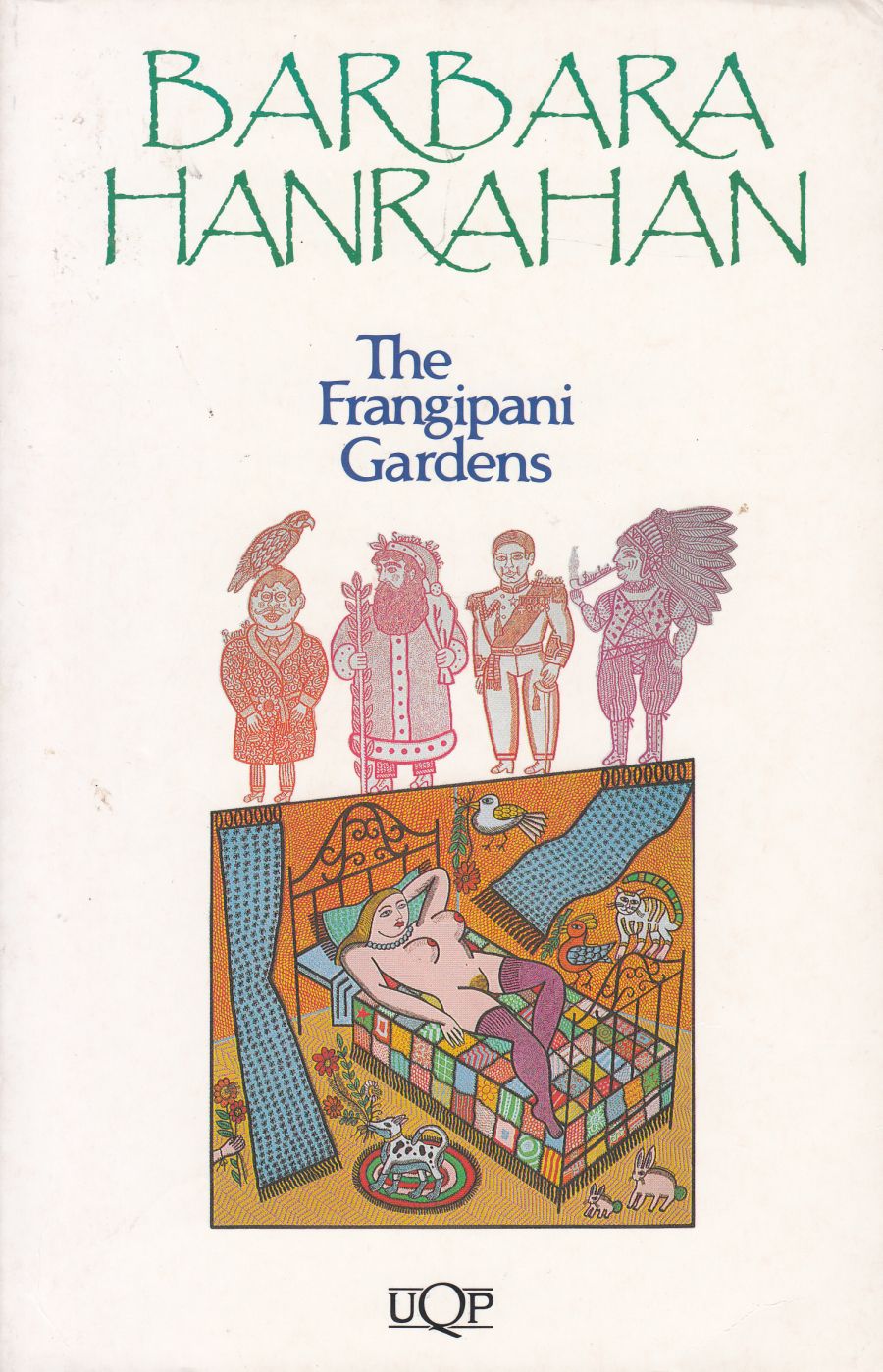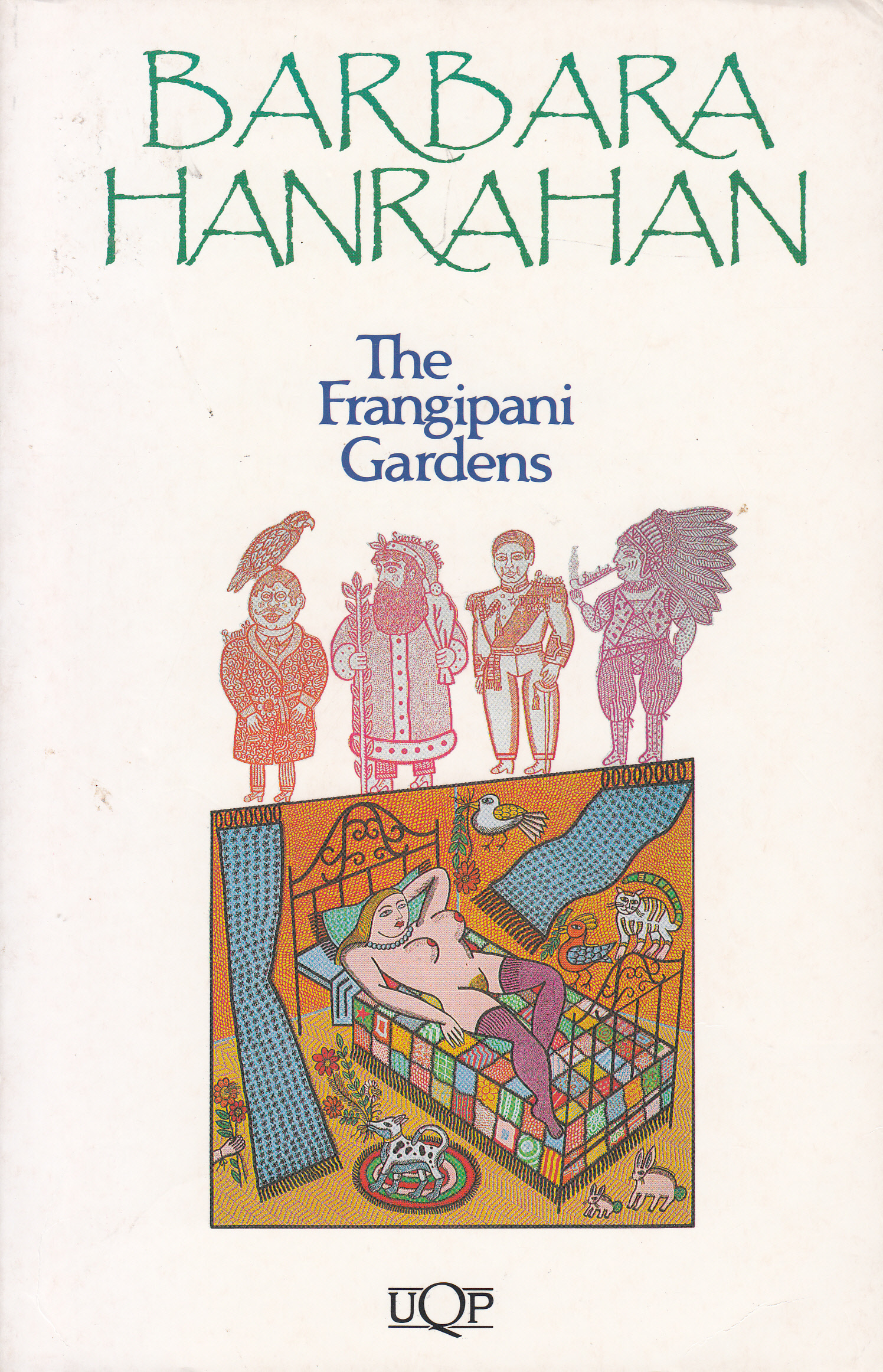
- Free Article: No
- Contents Category: Fiction
- Review Article: Yes
- Article Title: A Sense of Magic and Mystery
- Online Only: No
- Custom Highlight Text:
Barbara Hanrahan is arguably the best woman writer to have emerged in Australia in the last decade, and that automatically puts her streaks ahead of most of her male colleagues. The Frangipani Gardens is her sixth novel and with the possible exception of the earlier The Albatross Muff, her best in terms of control, artistry, and characterisation, Perhaps more importantly for her growing number of admirers, Hanrahan is a masterly raconteur, handling her bizarre characters and intricate plots with ease and verve.
- Book 1 Title: The Frangipani Gardens
- Book 1 Biblio: UQP, $7.95 pb
- Book 1 Cover Small (400 x 600):

- Book 1 Cover (800 x 1200):

I would suspect also that Hanrahan is a feminist; she writes from an un- mistakeable female tradition. I do know that she is an artist and printmaker, qualities which are very evident in her richly sensuous prose, her startlingly accurate descriptions of people and places, particularly the Australian bush, and flora both exotic and native.
The chief protagonists of the novel are the orphaned Lou and Tom who flee from sexual and economic exploitation in Adelaide to the seeming tranquillity of Fern Gully and Aunt Doll’s spinster’s cottage. The year is 1927 and the Duke and Duchess of York are visiting Australia for the opening of the new Parliament, laden with sumptuous trappings of the old world and its simpering conventions. Hanrahan uses this visit to satirise not only the irrelevance of royalty but more pertinently the falsity of Adelaide society which flocks to gawp at the insipid entourage. Legless soldiers line the streets, unemployed sleep on the bank of the Torrens, children are molested, but ail is unseen as Adelaide and her citizens do homage to foreign rulers.
Hanrahan provides the reader with a wealth of grotesques whom, like White, she sees as the illuminati, who derive from their madness and deformity a measure of knowledge which is denied the physically healthy. Tom takes fits. Girlie O'Brien, Adelaide socialite and dabbler in sorcery, is a dwarf, a fairy child; Gran O'Brien, geriatric, and tormenting Tom and the youthful Boy O’Brien with tales of Catholic martyrs and the Irish famine; Pearly, Gran’s companion, devout member of the Church of Christ and intimate of evil and seduction; Charlie, the outcast with whom Tom forms a relationship, English-born mystic and lecher after young girls; Swells, the dandy paederast and rapist who is also the revered and reverent Brother Wells, Christian Brother. And there is also Aunt Doll who like Charlie counteracts the evil of Girlie and Pearl and ultimately rescues Lou and Tom.
The Frangipani Gardens is not only a rollicking good story, with clay dolls stuck with pins, Tarot packs, strange manifestations, death and suicide and rape and sacrificial victims. It is also a brilliant exposure of religious sham, of the Establishment, of royalty, of sexual mores and hypocrisy. It is a very witty novel, coolly objective in its treatment of the foibles, weaknesses and evil of people and society. At times it is very funny. Much of the objectivity, and resultant social criticism, derives from Hanrahan’s innovative perspective through the eye of the child narrator. Each chapter, and sometimes sub-chapter, is given from a different narrative point of view, but always that of the child or young adolescent. One of the disappointments of the novel is that this technique denies entry to the adult mind; thus the enormous sympathy for the young Boy O’Brien is lost to the adult Boy, returned hero from the first war, socialite and ultimate cleanser of Frangipani Gardens.
One obsession which recurs from the earlier works is the sense of doom which surrounds childbirth, the notion of the rending of fragile female flesh and the guilt which this engenders in most children. Boy O’Brien is constantly aware of his guilt: ‘It was you who did it – killed her. You were too big as a baby, Boy O'Brien. Coming out, you tore her; you rent her private places’, And this when his mother dies from consumption many years later! There is also the constant theme of the sexual seduction of the young girl by a father-figure, of potential incest; in short, for Hanrahan, sexuality would seem to be equated with and derive from evil.
The Frangipani Gardens is an important novel and can only increase Hanrahan’s stature, if she is ever recognised, within Australian literature. Her carefully constructed, imaginative and socially important novel is a refreshing change after the self-indulgence of so many self- styled feminist writers or the mentally- masturbatory fantasies of the bulk of Australian contemporary male authors. U.Q.P. deserves congratulations for the splendid paperback edition, which like the earlier The Peach Groves and Where the Queens All Strayed uses Hanrahan’s textual drawings and screenprints (covers) to produce volumes which convey from their very appearance and format the rich and exotic quality of the prose.


Comments powered by CComment